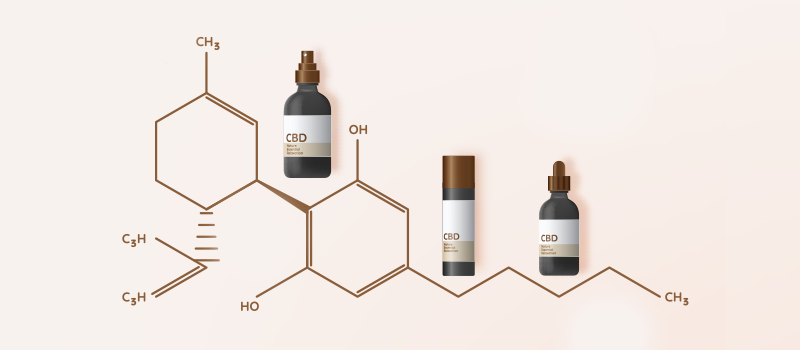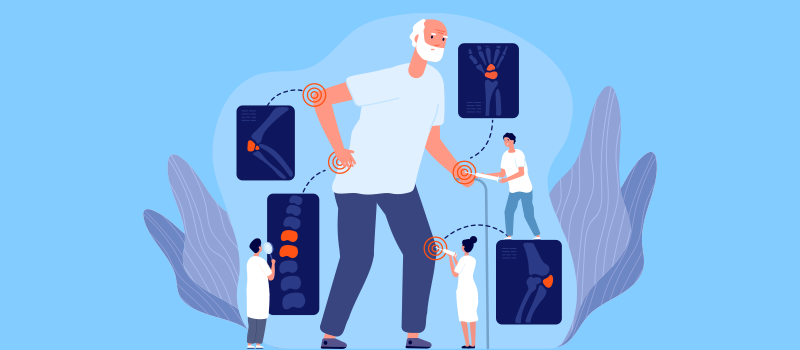What’s the Buzz
The Bee Healthy Blog
Hip Bursitis Symptoms & Treatments

Key Takeaways
-
The hip joint is where your thigh bone connects to your pelvis. The main symptom of hip bursitis is hip pain. The pain can be sharp and intense during the early stage and achy in the later stage, where the pain spreads to a larger area.
-
Prolonged walking, sitting, standing, squatting, stair climbing, or lying on the hip can worsen symptoms. Hip bursitis can be treated with lifestyle changes, over-the-counter medications, corticosteroid injections, and surgery.
-
You can lower your risk of developing hip bursitis or worsening inflammation by losing weight, strengthening and improving the flexibility of your hip muscles and core muscles, and physical therapy.
In the early stage, hip bursitis can cause sharp, intense pain on the outside of the hip. During later stages, hip bursitis is associated with a dull ache in a larger area surrounding the affected hip. Please continue reading to find out what causes bursitis of the hip, as well as what you can do to relieve pain.
What is hip bursitis?
Bursae are small fluid-filled sacs located between bones and soft tissues. There are over 150 known bursae in the human body, including the hips, knees, heels, shoulders, and elbows. The jelly-like substance in the fluid-filled sac (bursa) has a cushioning effect and reduces friction during normal movement. Bursitis is an inflammation or irritation of a bursa, causing pain.
The two main bursae in the hip area that commonly become inflamed are the trochanteric bursa and iliopsoas bursa. The trochanteric bursa is located on the greater trochanter, a bony prominence at the upper end of the thigh bone. When this bursa becomes inflamed, it is labeled trochanteric bursitis.
The other major bursa near the hip joint is the iliopsoas bursa. It is situated on the inner side of the hip, near the groin. Inflammation of this bursa is called iliopsoas bursitis or hip bursitis. Trochanteric bursitis is more common, but both are treated in the same way.
Why did I develop hip bursitis?
Anyone can develop this condition, but hip bursitis occurs more commonly in middle-aged and older women. Men and younger adults are less likely to get hip bursitis. Risk factors for developing bursitis include:
-
Injury due to repetitive motion or repeated irritation (overuse), for example, repetitive motions during running, walking, cycling, climbing stairs, gardening, or prolonged standing.
-
Hip injuries, for example, from falling on your hip or bumping your hip. A hip injury can also occur from lying on one side for a long time.
-
Surgery on the hip or placement of prosthetic implants in the hip can irritate the bursa and cause bursitis pain.
-
Spinal conditions, for example, arthritis of the lumbar spine, scoliosis (a sideways curvature of the spine), or other spinal problems that affect how you walk.
-
Rheumatoid arthritis can increase your risk of developing an inflamed bursa.
-
Bone spurs (bony overgrowths) or deposits of calcium in the tendons of the hip muscles can irritate a hip bursa and cause inflammation.
-
Leg length differences (where one leg is longer than the other). This can affect your walk and cause irritation and inflammation of the hip bursae.
What are 3 symptoms of hip bursitis?
The main symptom of hip bursitis is hip pain.
-
The pain from greater trochanteric bursitis is usually a sharp, intense pain at the outermost point of the hip. It can extend to the thigh bone on the affected side. Iliopsoas bursitis causes pain in front of the hip (groin area and upper thigh), as opposed to trochanteric bursitis symptoms, which are in the outer part of the hip and outer thigh.
-
In the later stages, the pain can be more of a dull ache in a larger area of the hip.
-
Activities such as prolonged walking, sitting, standing, squatting, stair climbing, or lying on the hip can worsen symptoms.
Note: You should seek immediate medical attention if you have hip pain along with painful swelling, warmth, tenderness, fever, and malaise (feeling unwell). You may have septic hip bursitis (infection and inflammation of a hip bursa). While non-infected hip bursitis is a common condition and can be treated at home, septic bursitis requires immediate medical attention.
How long does hip bursitis last?
Hip bursitis can be acute, with the pain lasting for a few hours to a few days. It can also be chronic, lasting for several weeks to several months. The hip pain may come and go with flare-ups from time to time. Acute hip bursitis can become chronic if it is not treated or the triggering activities continue.
How do doctors diagnose hip bursitis?
Your doctor can make a diagnosis of hip bursitis based on a physical examination and tests such as X-rays, magnetic resonance imaging (MRI), and bone scans. If your doctor suspects other conditions on your physical exam that can cause similar symptoms, such as greater trochanteric pain syndrome, ischial bursitis, or iliotibial band (IT band) syndrome, they may order additional tests.
How do you get rid of bursitis in the hip?
Conservative Measures
The initial treatment consists of lifestyle changes and over-the-counter medications:
-
Avoid activities that trigger symptoms.
-
Take nonsteroidal anti-inflammatory drugs (NSAIDs) such as naproxen, ibuprofen, celecoxib, piroxicam, or others to reduce pain and inflammation. Note that these medications are for short-term pain relief. Talk to your doctor if you need to take NSAIDs for more than 7-10 days. Remember that if you have kidney disease or heart problems, NSAIDs may not be safe for you.
-
Use devices such as a cane or crutches, if needed, to reduce stress on the hip joint.
-
Consider physical therapy. Physical therapists can teach you exercises to improve hip flexibility and strength. A physical therapist can also offer other treatments like ice/heat, massage, and ultrasound.
Note: The same treatments are also useful for related conditions such as greater trochanter pain syndrome.
Corticosteroid Injections for Hip Bursitis
An injection of a steroid medicine and local anesthetic into the hip bursa, done in a doctor’s office, can relieve hip pain. The pain relief typically lasts several months and may even be a permanent cure for hip bursitis for some people. If the hip inflammation and pain come back, a corticosteroid injection can be repeated. However, you can only get a limited number of steroid injections due to the risk of damaging surrounding tissues.
Surgery for Hip Bursitis
If hip bursitis does not respond to non-surgical treatments, surgery may be recommended, although it is rarely needed. Doctors can remove the affected bursa without any effect on hip function. Arthroscopic surgery can be done to remove the bursa through a small incision (cut), through which the surgeon inserts an arthroscope (an instrument with a camera at its tip). This is a minimally invasive surgery and is less painful with a faster recovery compared to open hip surgery.
What not to do with hip bursitis?
Avoid repetitive physical activity that puts more stress on your hip. Take frequent breaks during activities such as running, cycling, walking, or standing and sitting for long periods of time.
How to prevent bursitis?
You can lower your risk of developing hip bursitis or worsening inflammation by doing the following:
-
Lose weight if you are overweight or obese.
-
Learn the proper techniques for work and sports activities.
-
Improve the strength and flexibility of your hip muscles and core muscles.
-
Increase the intensity of physical activity slowly.
-
Take frequent breaks during prolonged activities.
-
Wear a properly fitting shoe insert if you have leg length differences.
Save on Your Medication with BuzzRx!
Manage your medication costs with BuzzRx coupons. Here are direct links to substantial savings for each medication:
-
Naproxen Coupon: The retail price is about $36.06, but with BuzzRx, you might pay as low as $6.55.
-
Ibuprofen Coupon: Typical retail prices are around $22.99, and with BuzzRx coupons, you could pay as low as $5.12.
-
Celecoxib Coupon: Retail prices are as high as $218.58. Save with BuzzRx coupons, with prices as low as $12.98.
-
Piroxicam Coupon: The usual prices are as high as $104.99, but with BuzzRx coupons, pay as little as $15.92.
Remember, these coupons are widely accepted at over 60,000 pharmacies, including major chains like CVS, Walgreens, and Rite Aid. Just present your coupon at the pharmacy to ensure you're getting the best possible price.
References:











SOCIAL